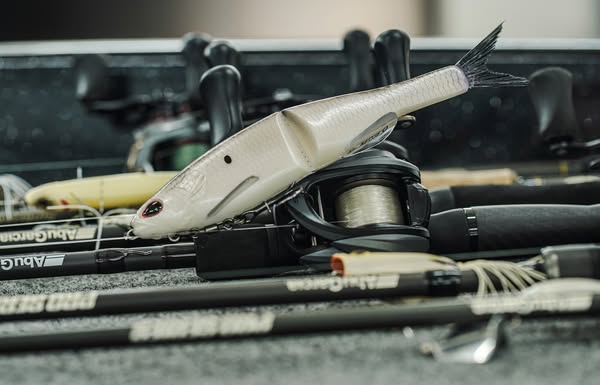
Ah, the Berkley Nessie! Overall, a fantastic choice for tempting that springtime largemouth, but also one of the hot baits of the big bass caught at the recent WON Bass, California Open where multiple 30-pound bags were brought to the scales. So as was proven, this jointed swimbait can be an absolute game-changer. Here’s what you need to know about the Berkley Nessie:
Bass Movement:
As water temperatures rise, bass transition from their deeper winter haunts to shallower areas with suitable spawning habitat. This often includes weedy flats, submerged wood, and the backs of coves. They become increasingly aggressive as they prepare to spawn or guard their newly laid eggs. This heightened activity makes them prime targets for enticing lures like the Berkley Nessie.
Berkley Nessie Action:

The Berkley Nessie’s segmented body creates a lifelike swimming action that perfectly mimics the movement of baitfish, a primary food source for pre-spawn, spawning, and post-spawn bass. Its realistic appearance, combined with the enticing wiggle, can trigger strikes even when other lures fail. The various sizes and colors available allow you to match the prevalent forage in your local waters.
Berkley Nessie Gear Choices:
To effectively fish a Berkley Nessie, you'll want a setup that offers both casting distance and the backbone to handle potentially larger spring bass. Here's a general guideline:
- Rod: A medium-heavy to heavy power casting rod in the 7 to 7.6-foot range will provide the necessary casting distance and leverage for controlling the lure and setting the hook.
- Reel: A baitcasting reel with a moderate to fast retrieve ratio (around 6.4:1 to 7.1:1) is ideal for picking up slack quickly and keeping pressure on hooked fish.
- Line: Braided line in the 30 to 50-pound test range is a great choice for its sensitivity and low stretch, allowing you to feel subtle bites and get solid hooksets. Consider adding a fluorocarbon leader (12-17 pound test) for increased stealth in clear water.
- Terminal Tackle: A quality snap or split ring will allow for easy lure changes. Avoid using large or bulky hardware that might impede the lure's action.
Presentation:
Now for the exciting part – how to fish it! Here are several effective techniques for targeting spring bass with the Berkley Nessie:
- Slow and Steady Retrieve: This is often the most effective method, especially in cooler early spring waters. Cast your Berkley Nessie parallel to likely spawning areas like weed lines or shallow flats. Slowly reel it in, allowing the lure's natural swimming action to entice curious bass. Vary your retrieve speed slightly, pausing occasionally to see if that triggers a strike.
- Targeting Cover: Bass in the spring often relate to structure. Cast your Berkley Nessie past submerged logs, docks, or patches of vegetation and retrieve it so it swims close to or even bumps into the cover. This erratic movement can trigger reaction strikes from bass holding tight to these areas.
- The Wake Bait Presentation: In very shallow water (1-3 feet), try retrieving the Berkley Nessie just below or even on the surface, creating a subtle "waking" action. This can be incredibly effective when bass are actively cruising or guarding shallow spawning beds. A slow, steady retrieve is key here.
- The Stop-and-Go: Imparting pauses and sudden bursts of speed during your retrieve can mimic an injured baitfish and trigger strikes. Cast your Berkley Nessie out, retrieve it a few feet, then pause for a second or two before continuing. Experiment with the duration of your pauses.
- Matching the Hatch: Pay attention to the size and color of the baitfish present in your local waters. The Berkley Nessie comes in various sizes and realistic colors. Choosing a Nessie that closely resembles the natural forage can significantly increase your chances of success. Shad, bluegill, and perch patterns are often excellent choices in the spring.
More Tips:

- Water Temperature: Keep an eye on water temperatures. Bass activity generally increases as the water warms into the 50s and 60s Fahrenheit.
- Water Clarity: Adjust your color choices based on water clarity. In clear water, natural colors often work best, while brighter colors can be more effective in stained or murky water.
- Spawning Activity: Be mindful of spawning beds. While it can be tempting to target bass directly on their beds, consider casting to the edges or nearby staging areas to avoid stressing the fish.
- Experimentation: Don't be afraid to experiment with different retrieve speeds, colors, and sizes of the Nessie until you find what the fish prefer on a given day.


 Advertising
Advertising